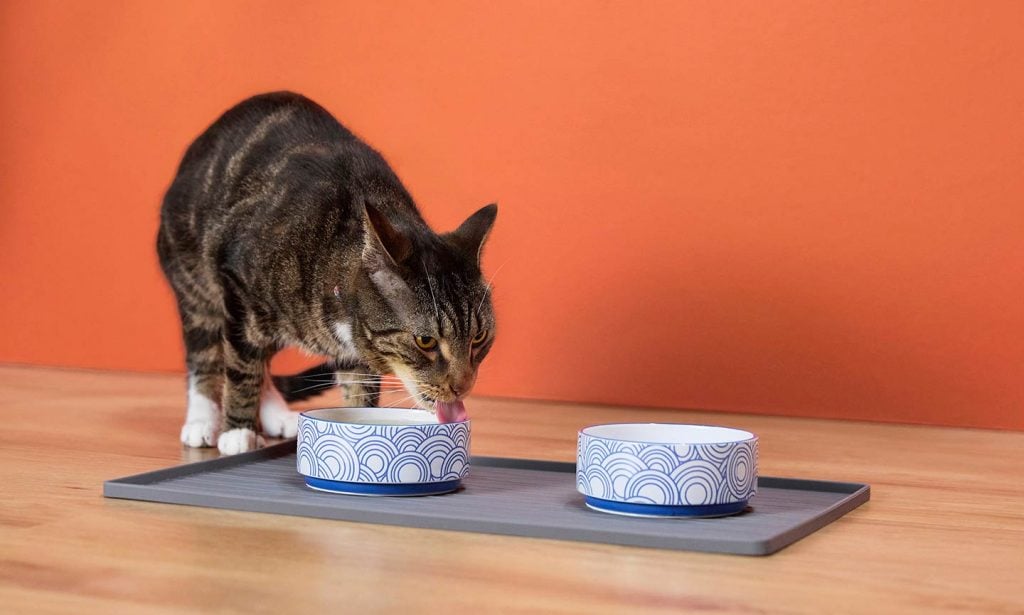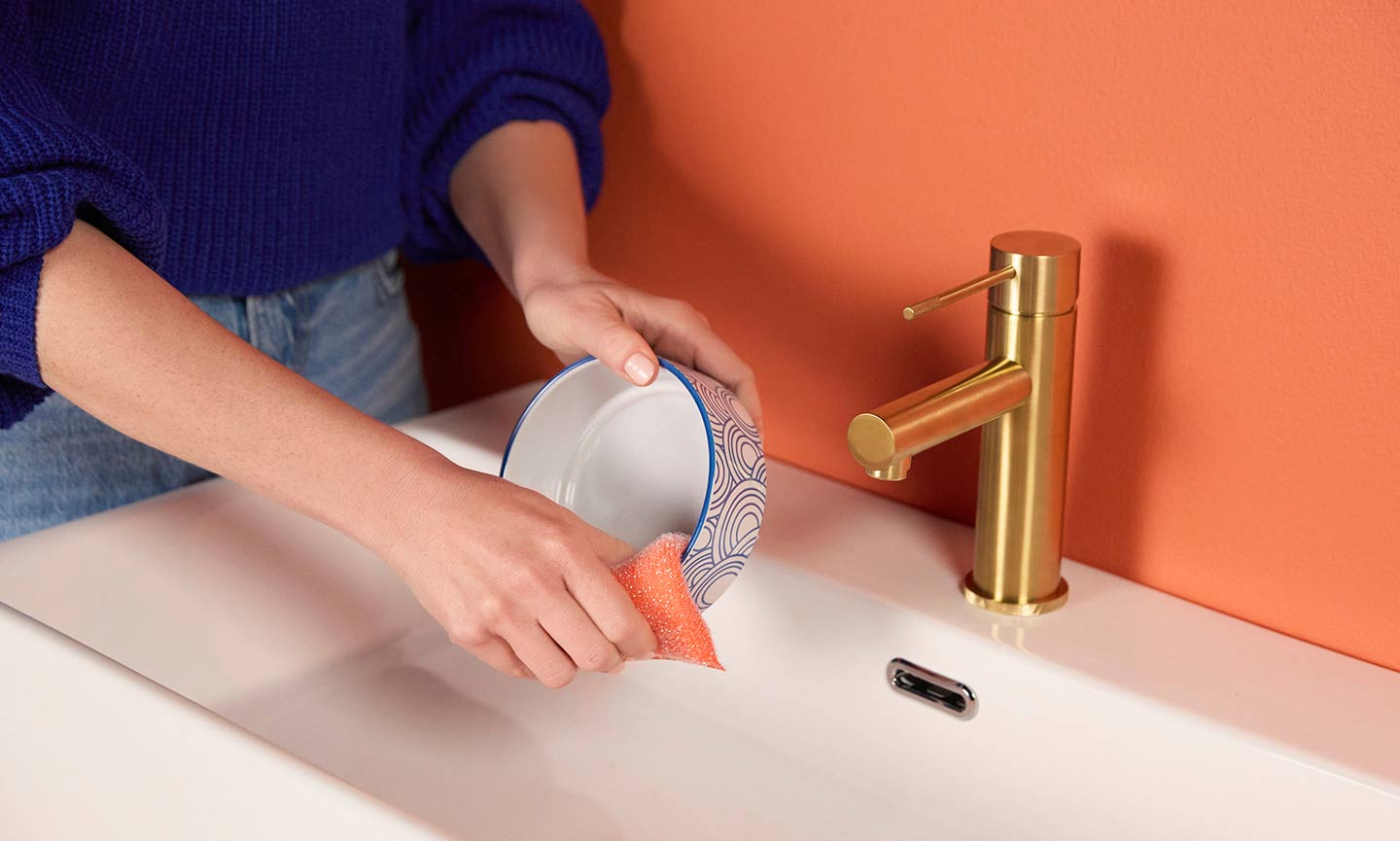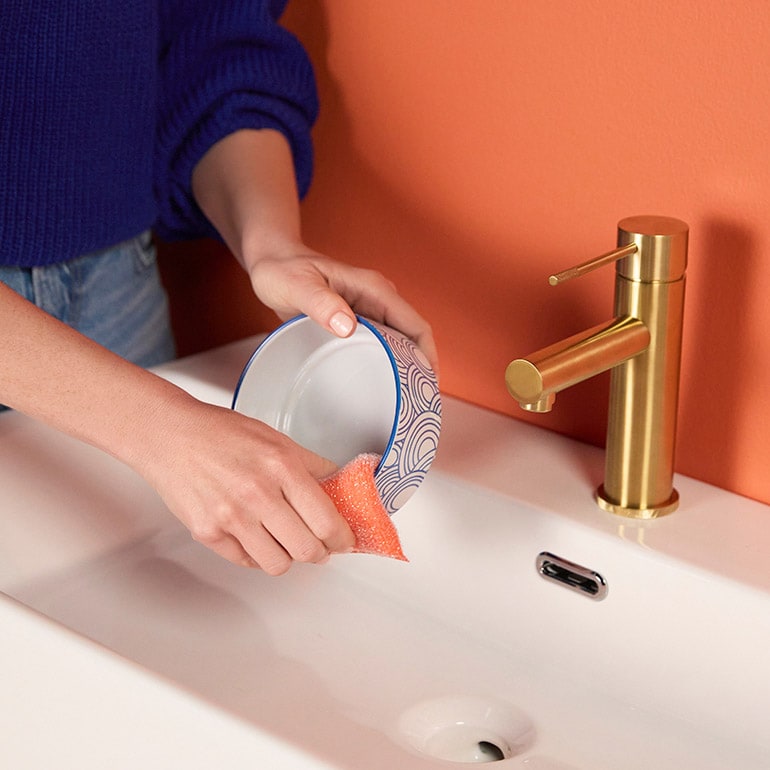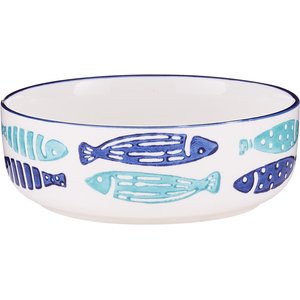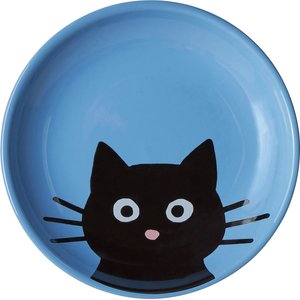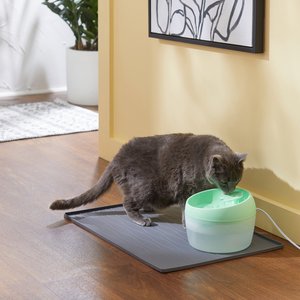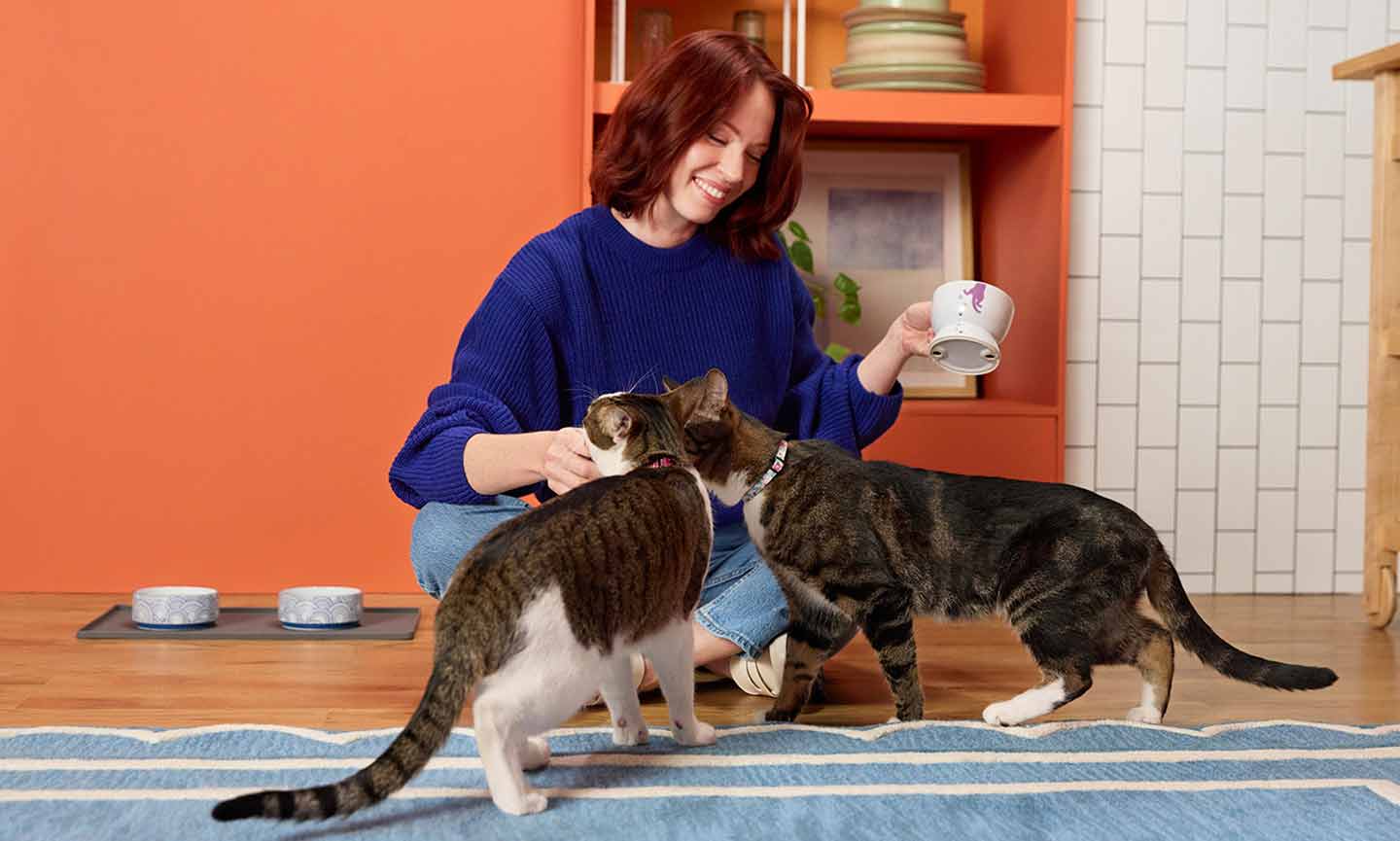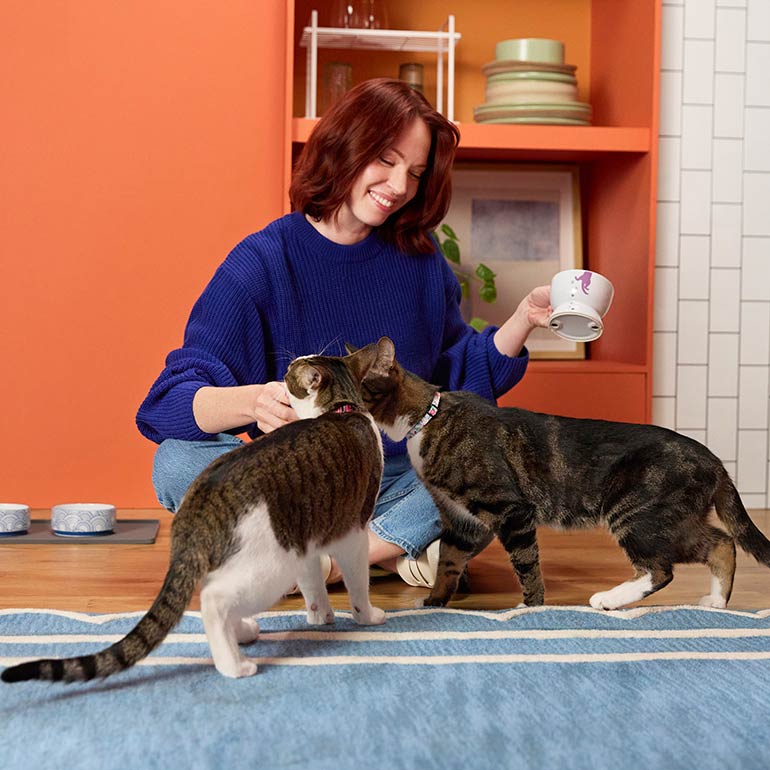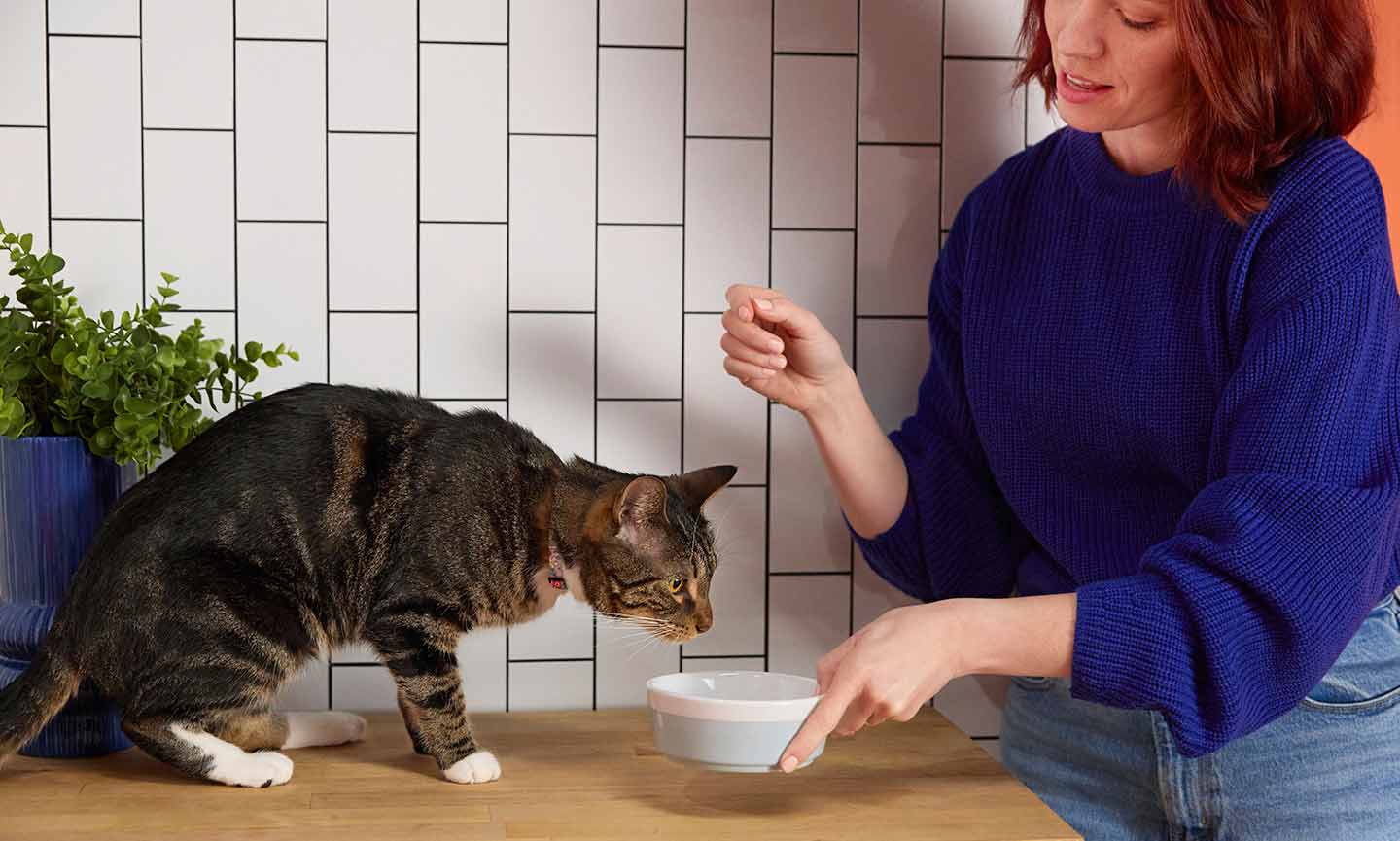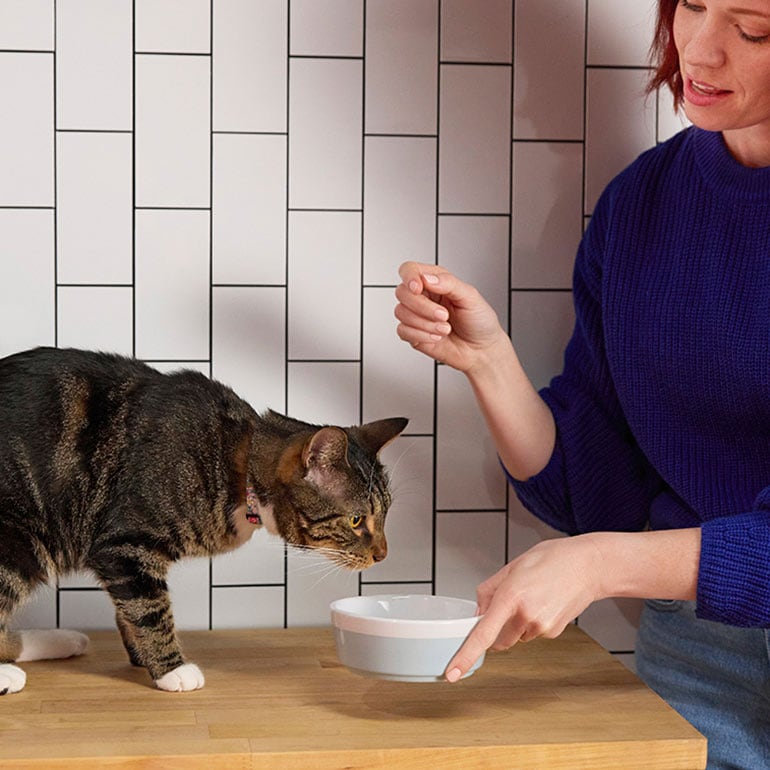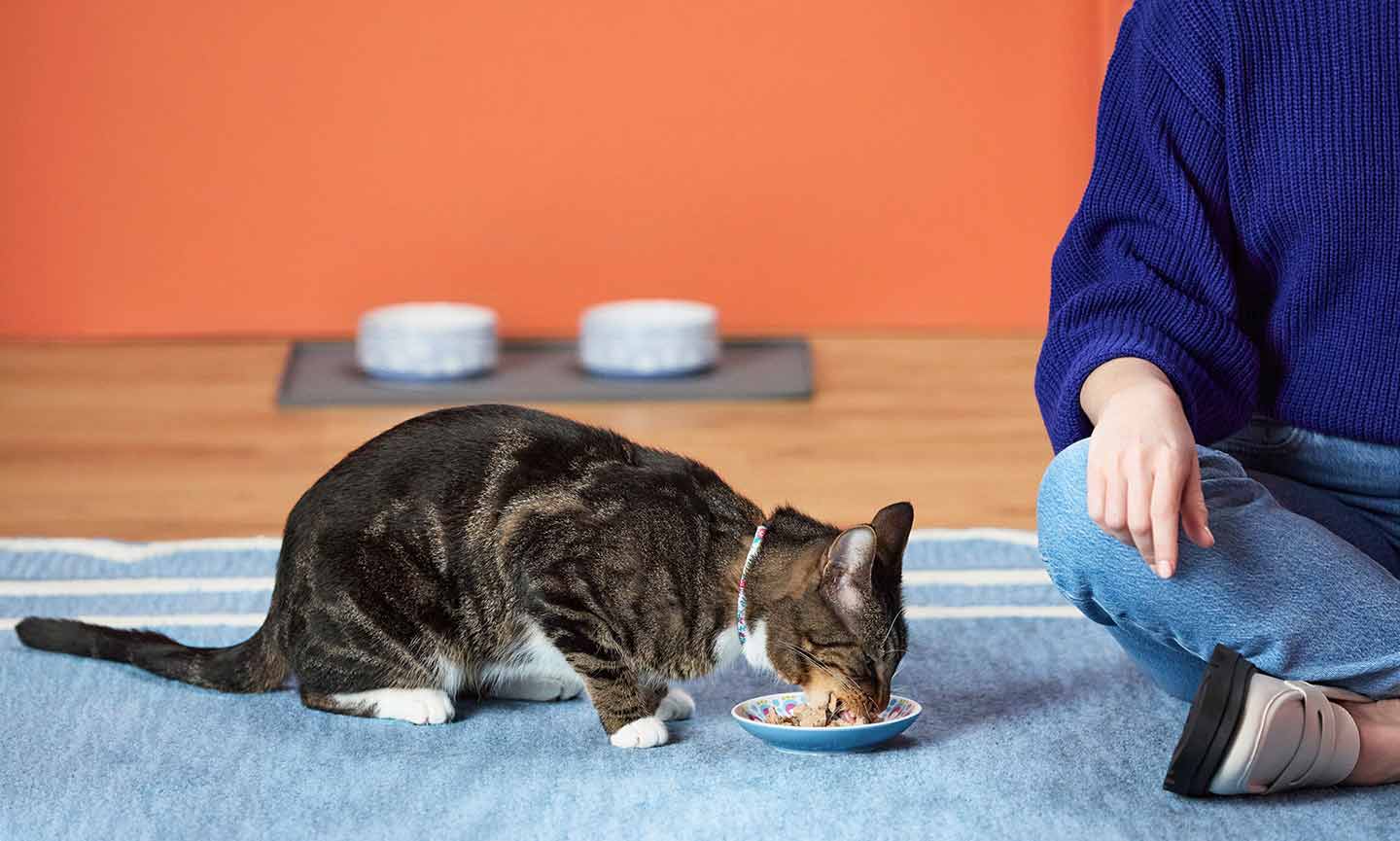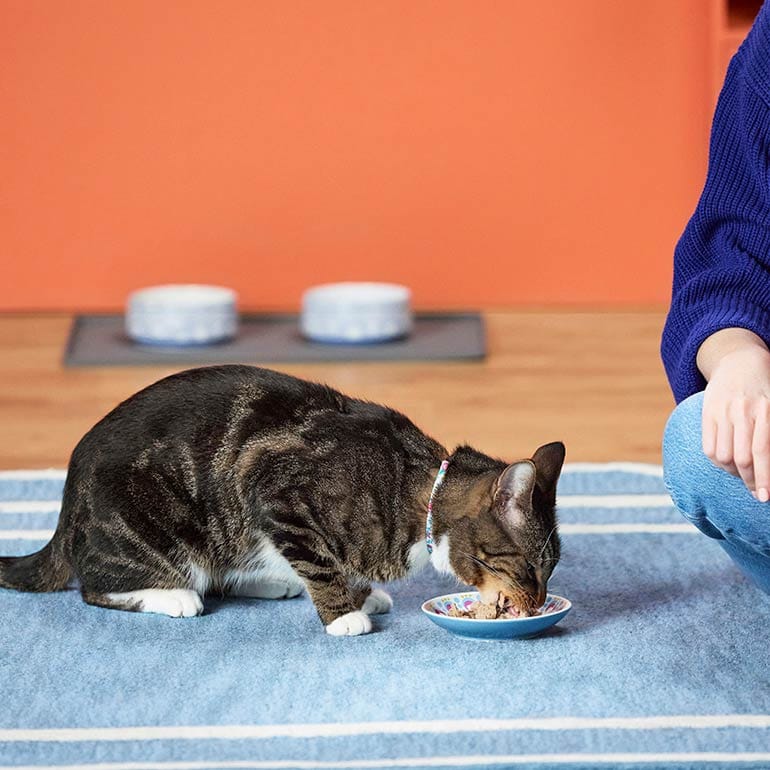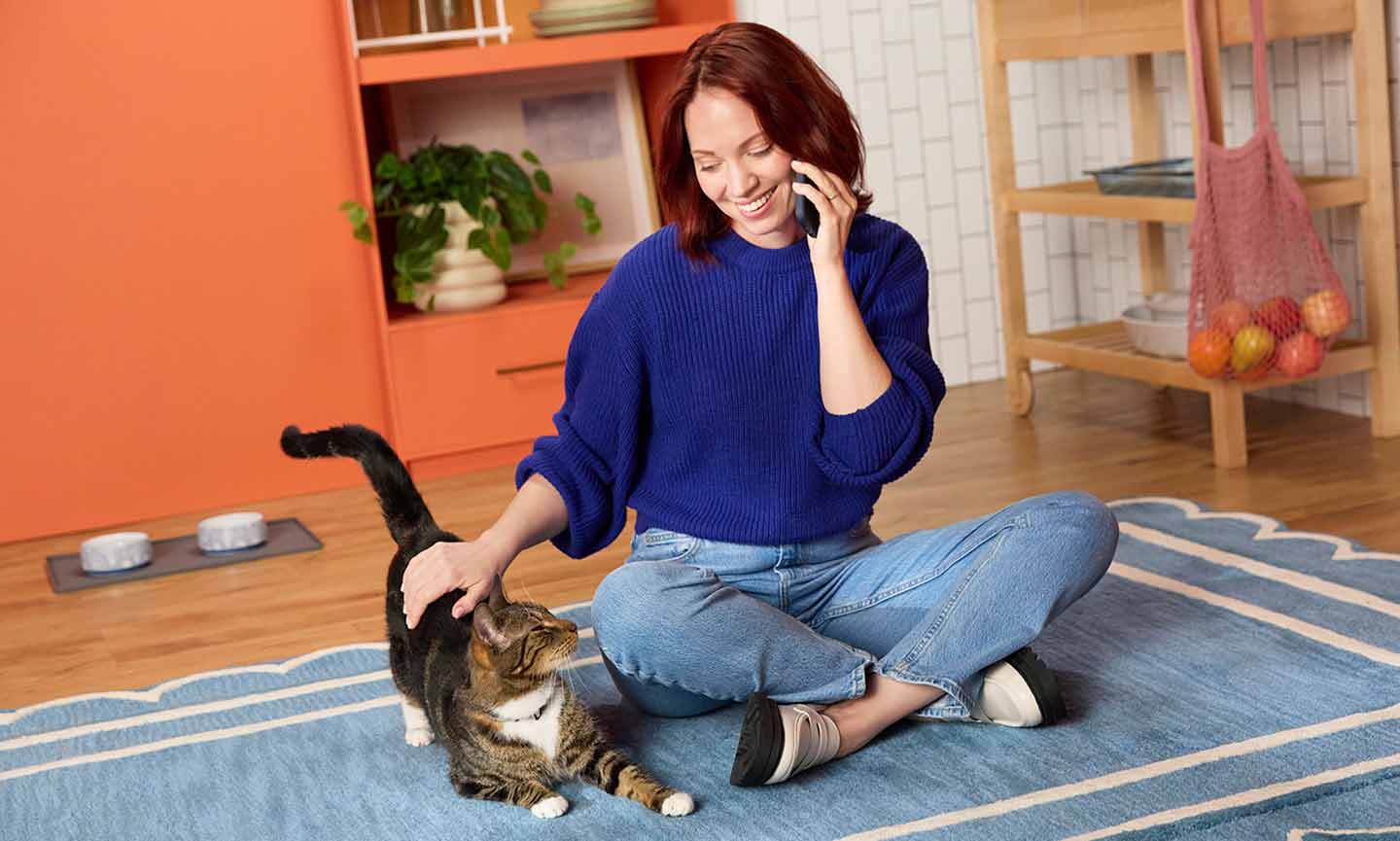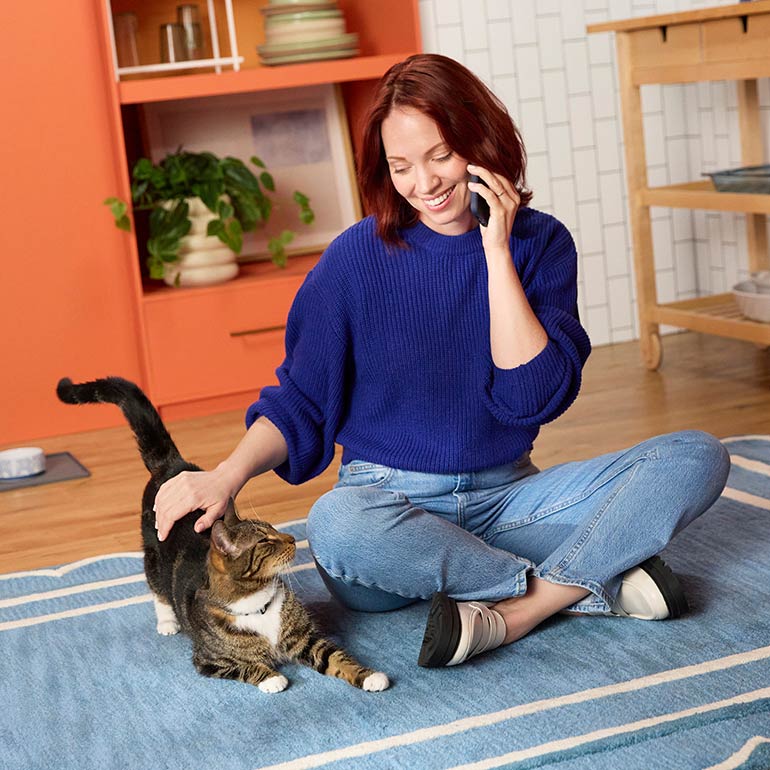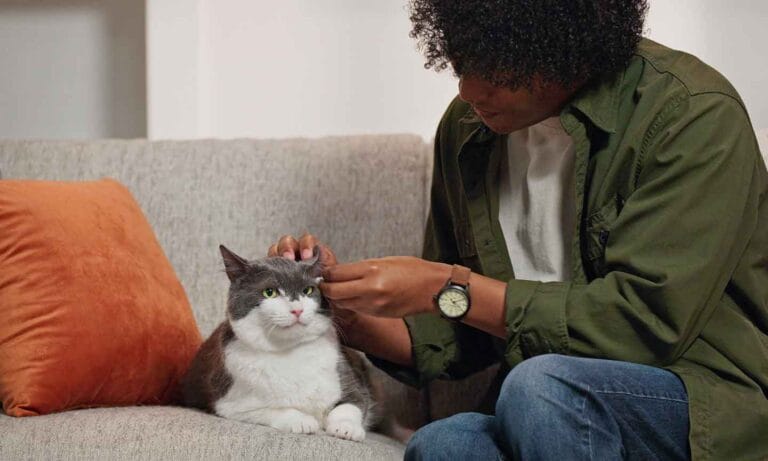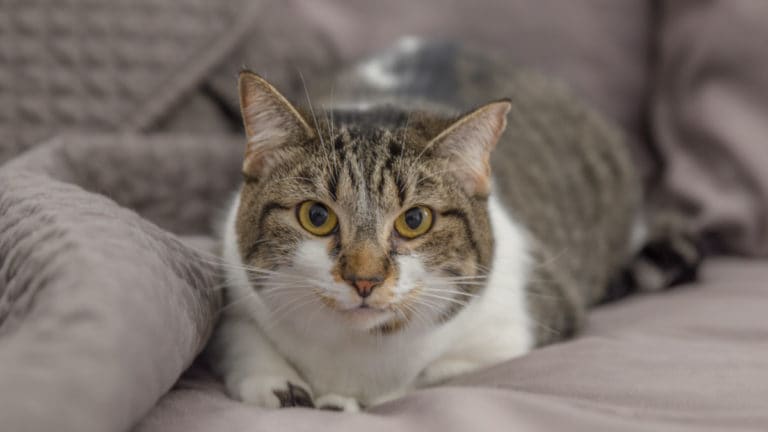In This Guide
How to Get a Cat to Drink Water: Step by Step
1 Clean Their Water Bowl Regularly
2 Try a Drinking Fountain
Cats love moving water because it tastes fresher—and because they’re naturally drawn to moving water sources, just like their ancestors. A bowl with a fountain or stream feature constantly rotates the water, making it a more desirable option compared to standing water.
Two Chewy cat parent favorites are the Drinkwell 360 Stainless Steel Pet Fountain and Catit Flower Plastic Cat Fountain. It can take a couple days for your cat to get used to a drinking fountain, but they’ll likely end up loving it. Leave a bowl of standing water out for them while they adjust to the new fountain.
3 Make Sure You Have Enough Water Bowls
4 Consider the Location
5 Try Wet Food
Incorporating wet food or snacks into your cat’s diet can help them get more fluids. Some dry foods also have higher water content than others. You can compare water content by looking for the moisture percentage in the list of nutritional information on the package. Most dry foods have a moisture content between 5-15%; canned foods typically have a moisture between 70-85%.
As always, speak with your veterinarian about the ideal diet for your cat, as certain wet foods can worsen medical issues such as dental disease.
6 Consult Your Vet
Cats may stop consuming as much water as they usually do if they aren’t feeling well physically or emotionally. If you notice a sudden decline in their drinking habits, consult your veterinarian right away.
No matter how dehydrated you think your cat is, never force them to drink water. Even if you get a little in their mouth, it likely won’t be enough water to help them feel better, and it can create an aversion to drinking water. In dire cases, your vet can administer fluids intravenously (IV).
How Much Water Does My Cat Need?
As a general rule, cats need about 1 ounce of water per pound of body weight every day. So, if your cat weighs about 10 pounds then they should drink about 10 ounces of water, or about 1.25 cups per day. Smaller cats require less, and larger cats require more.
Additional factors may increase this daily requirement, including:
- High temperatures
- Dry climates
- Physical activity
- Medical conditions, especially kidney or urinary bladder disease, diabetes, diarrhea and constipation
- Certain medications
Proper water intake supports stomach, intestine and kidney and urinary tract health. Poor hydration, on the other hand, can contribute to kidney disease, bladder stones and urinary problems, among other concerns. So, if you suspect your cat’s not getting enough fluids, it’s important to take action.
How to Track Your Cat’s Water Intake
It may be impossible to tell exactly how much water your cat is drinking. (If only there were a measured hydro flask for felines!) The good news is that most pet parents don’t need to know the exact amount—it’s more important that you monitor their general drinking habits so you can notice changes that may indicate health issues. There are a couple different methods you can try:
- Keep track of how often your cat goes to their water dish—and note whether their frequency increases or decreases. If your cat’s going to their dish more often, it stands to reason that they’re drinking more!
- Monitor the water level in your cat’s bowl. You can eyeball the level before your daily refills, or measure the amount of water left in the bowl before you clean it each day. Just keep in mind that water will evaporate and/or even splash out during the day, which will affect that measurement.
- Use a smart water dish. These devices connect to your cell phone and can help quantify water consumption. For example, the Instachew Puresmart Water Fountain delivers push notifications to your phone about the water level. It also cleans the water with a UV light.
Why Isn’t My Cat Drinking Water?
In the same way cats are very picky about their litter boxes (and rightfully so!), they tend to get finicky when it comes to their water situation. Common reasons why your cat isn’t drinking water include:
- Dirty or old water bowl
- Your cat prefers running water over still water
- Their water bowl is in an undesirable location
- Uncomfortable bowl shape
- Not enough bowls
Inconvenient to get to their water - Illness
If you’ve worked through the steps above and your cat still won’t drink, contact your vet.
Is My Cat Dehydrated?
Be on the lookout for these signs of dehydration:
- Reduced energy levels
- Weakness
- Constipation
- Hard, dry poop
- Reduced urination
- Dry or sticky gums
- Sunken eyes
- Decreased appetite
- Loss of elasticity in the skin
If you suspect your cat is dehydrated, contact your vet. They can run tests such as bloodwork and urinalysis to determine if that is the case, and if so, can administer fluids via IV or offer tailored solutions to ensure your cat is drinking enough water.
Keep Your Kitty Hydrated
Share:
